Reza Nejabati
Federated Transfer Component Analysis Towards Effective VNF Profiling
May 01, 2024Abstract:The increasing concerns of knowledge transfer and data privacy challenge the traditional gather-and-analyse paradigm in networks. Specifically, the intelligent orchestration of Virtual Network Functions (VNFs) requires understanding and profiling the resource consumption. However, profiling all kinds of VNFs is time-consuming. It is important to consider transferring the well-profiled VNF knowledge to other lack-profiled VNF types while keeping data private. To this end, this paper proposes a Federated Transfer Component Analysis (FTCA) method between the source and target VNFs. FTCA first trains Generative Adversarial Networks (GANs) based on the source VNF profiling data, and the trained GANs model is sent to the target VNF domain. Then, FTCA realizes federated domain adaptation by using the generated source VNF data and less target VNF profiling data, while keeping the raw data locally. Experiments show that the proposed FTCA can effectively predict the required resources for the target VNF. Specifically, the RMSE index of the regression model decreases by 38.5% and the R-squared metric advances up to 68.6%.
iOn-Profiler: intelligent Online multi-objective VNF Profiling with Reinforcement Learning
Dec 14, 2023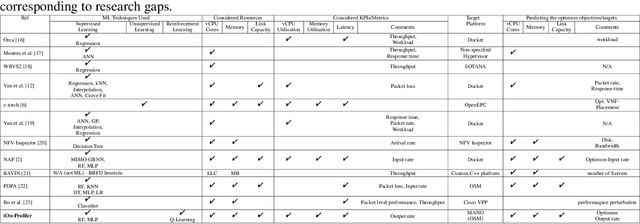
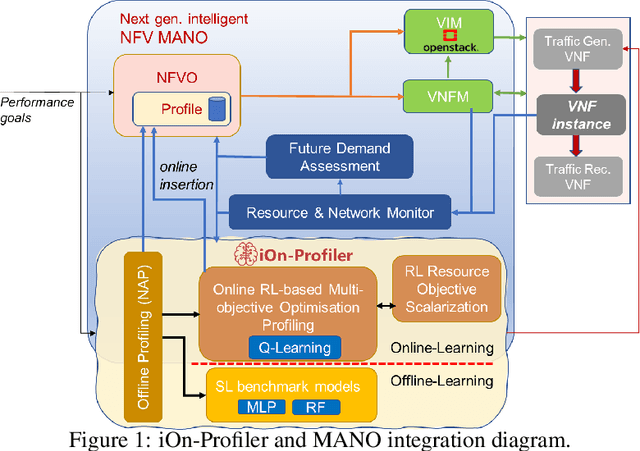
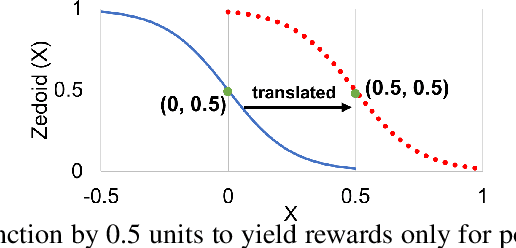
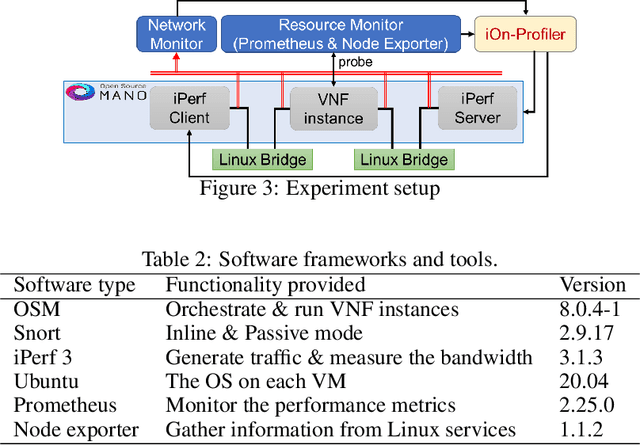
Abstract:Leveraging the potential of Virtualised Network Functions (VNFs) requires a clear understanding of the link between resource consumption and performance. The current state of the art tries to do that by utilising Machine Learning (ML) and specifically Supervised Learning (SL) models for given network environments and VNF types assuming single-objective optimisation targets. Taking a different approach poses a novel VNF profiler optimising multi-resource type allocation and performance objectives using adapted Reinforcement Learning (RL). Our approach can meet Key Performance Indicator (KPI) targets while minimising multi-resource type consumption and optimising the VNF output rate compared to existing single-objective solutions. Our experimental evaluation with three real-world VNF types over a total of 39 study scenarios (13 per VNF), for three resource types (virtual CPU, memory, and network link capacity), verifies the accuracy of resource allocation predictions and corresponding successful profiling decisions via a benchmark comparison between our RL model and SL models. We also conduct a complementary exhaustive search-space study revealing that different resources impact performance in varying ways per VNF type, implying the necessity of multi-objective optimisation, individualised examination per VNF type, and adaptable online profile learning, such as with the autonomous online learning approach of iOn-Profiler.
Seer: Empowering Software Defined Networking with Data Analytics
Oct 04, 2016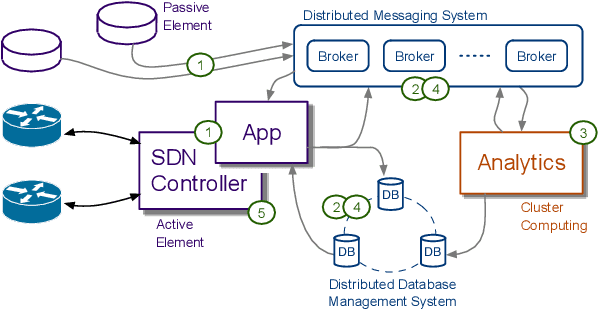
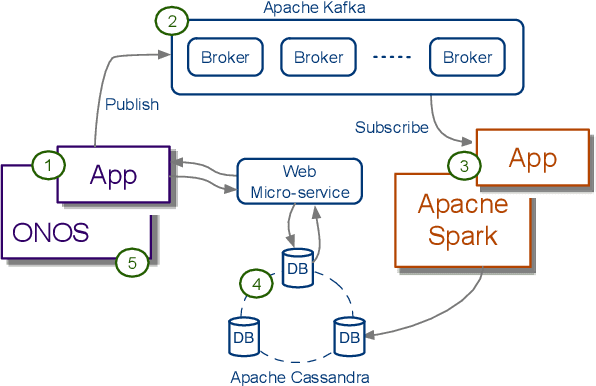
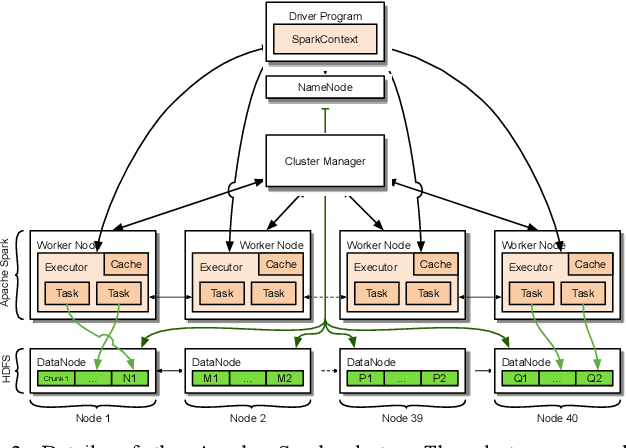
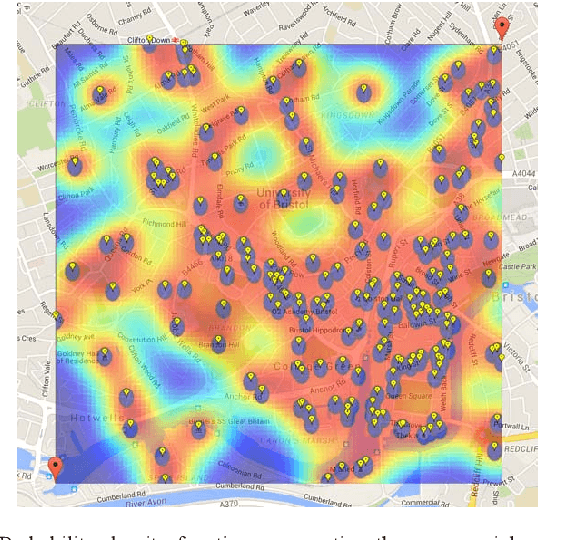
Abstract:Network complexity is increasing, making network control and orchestration a challenging task. The proliferation of network information and tools for data analytics can provide an important insight into resource provisioning and optimisation. The network knowledge incorporated in software defined networking can facilitate the knowledge driven control, leveraging the network programmability. We present Seer: a flexible, highly configurable data analytics platform for network intelligence based on software defined networking and big data principles. Seer combines a computational engine with a distributed messaging system to provide a scalable, fault tolerant and real-time platform for knowledge extraction. Our first prototype uses Apache Spark for streaming analytics and open network operating system (ONOS) controller to program a network in real-time. The first application we developed aims to predict the mobility pattern of mobile devices inside a smart city environment.
 Add to Chrome
Add to Chrome Add to Firefox
Add to Firefox Add to Edge
Add to Edge